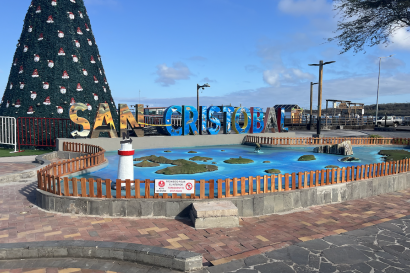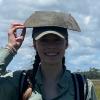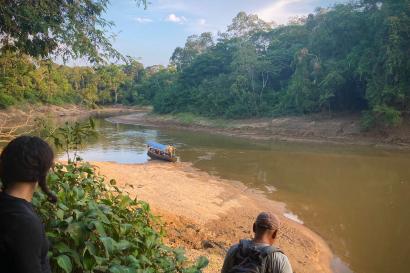
On my way to class every day, I pass by dozens, maybe hundreds, of works of graffiti and street art. Quito is an amazing city, with so much to look at, so I hardly ever glanced at the words, names, and designs that covered almost every available wall. I’ve never known anything about street art, so even when I did notice one piece in particular, my thoughts were mostly limited to, cool, a big snake or wow, those letters sure are big.
But this past weekend I spent a total of twenty dollars for two of the coolest days of my life. The university where I take some of my classes, la Universidad San Francisco de Quito, sponsors occasional guided tours/trips that any student can sign up for. Initially hesitant (why should I spend ten dollars each trip just to do more learning - on a weekend??) I figured the topics were interesting enough that it was worth it, and I signed up, along with three other friends from my program.
The first trip was a tour of graffiti and street art around the city of Quito. Since I have always been absolutely terrible at anything and everything involving art, I wasn’t sure how much I would get from it. I also have never taken any sort of art history class, but I thought it would be a great way to learn more about the city I’ll be calling home for the next four months, through something that covers most walls around here.
We started out the day with a brief discussion of the difference between graffiti and street art - it turns out graffiti is word-based, while street art is centered around images. We walked down different roads, and our amazing tour guide (a street artist himself) pointed out the distinct styles of different artists, and the meaning he takes from each one.
As our tour guide explained, street art is a reflection of the city itself. Because anyone can become a street artist, or a tagger, the art is as diverse as the people living in the city. Ecuador takes great pride in its diversity, especially its biodiversity, and the city’s love for nature is literally written on the walls. The majority of the art we looked at incorporated nature in some form, often including written messages.
Over the course of the day, something shifted in my perspective. It’s pretty cool when you start to see something you’ve seen every day in a totally different manner. I began recognizing patterns in the street art we passed, signature designs of artists we were learning about. I learned about some amazing female street artists. We saw one incredible piece, covering an entire wall, a beautiful work of street art the artist dedicated to a friend who had died.
Towards the end of the day, our tour guide pulled spray cans out of the bag he had been lugging around all day. We were in the Parque Carolina, at a skate park covered with tags and other works of graffiti and art. He told us that we would have the opportunity to create our own tags and do some graffiti of our own, which, how amazing is that. Like I mentioned, I am in no way an artist, but I have some practice with my own name, and now it’s in this park forever! Or at least until there’s some really strong rain.
Saturday was a different trip. We had to be at our meeting point at 7:45, and all twelve of us bleary-eyed students, most of whom are now unaccustomed to waking up so early, piled onto the bus in a messy heap. We drove 45 minutes to a place called Pintag, and spent the day totally immersed in nature. The better part of the day was spent at the Laguna Mica, often called Micacocha, combining a Spanish and Kichwa word. This lake provides the drinking water for the city of Quito, so it was incredibly moving to be able to stand next to a beautiful body of water, giving thanks for all it’s given us and the residents of Quito.
We also managed a hike up a mountain next to the lake, which offered an even more expansive view of our surroundings. The land we were on, although not that far away from the busy city of Quito, was incredibly quiet and serene, nothing like what we had experienced in the city so far. Our guides for the day, all from Pintag, led us in an exercise on top of the mountain, an exercise designed to show all of us the energy we already possess inside of us, and to open ourselves to the energy of the mountains, the water, the animals, the world. We stayed on that mountain in silence for a while, and it was spectacular.
Looking back, the two trips were so different, yet so similar. In the city, we were taught how to see the beauty in the urban environment, in Pintag, we were shown the beauty of silence and of nature. It’s so easy to get caught up in the day-to-day, in walking the same trails or streets without noticing everything around you. I haven’t even been here for a month, yet I am already so appreciative of the Ecuador I’ve been fortunate enough to see. Here’s to many more months of discovering beauty!

Madison Kelly
<p>My name is Madi Kelly, and I am a junior at the University of Vermont. I am studying Linguistics and Spanish, with a minor in Deaf Studies. I am hoping to be an ESL teacher, and I have taught abroad in Ukraine and South Africa so far, but I have never been to South America, and I can’t wait to see Ecuador!</p>






